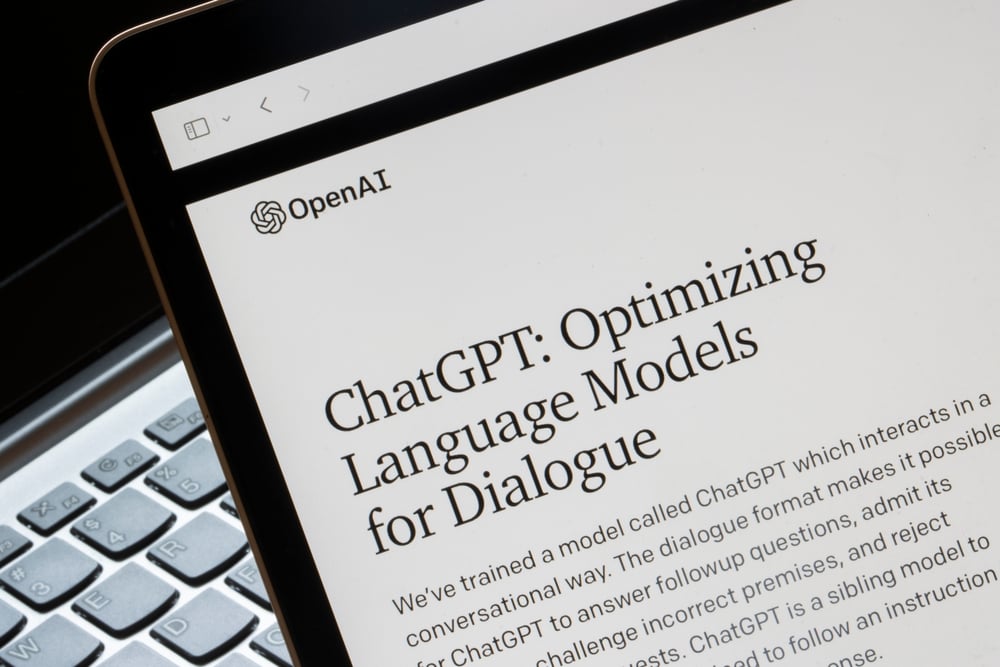
A new mainstream AI (artificial intelligence) chatbot, ChatGPT, has become a viral sensation thanks to the likes of TikTok, but what does this mean for the tech industry?
If you ask the platform to describe itself , ChatGPT says: “ChatGPT is a powerful tool for generating human-like text in a conversational style, and it has a wide range of potential applications in chatbots, virtual assistants, and other areas.”
Now in its third iteration, ChatGPT is open to the public to freely use after the developers have showed the technology millions and millions of human-generated content.
“It has developed this understanding of what convincing text looks like or what human text looks like,” explains Andrew Chen, a Research Fellow in University of Auckland’s Koi Tū: The Centre for Informed Futures.
“So, then, what you can do is that you can write a prompt and give that to the system and it will generate a response that’s convincing based on everything that is learned to this point.”
The current ChatGPT model so far has been the most convincing human-like AI model out there accessible for the general public, but costs millions to train and run.
But despite costing millions to run, ChatGPT is giving the world a little taste of what AI can potentially do for everyone by making it accessible, ultimately led to the virality of the platform.
Many TikTok users have been sharing their experience using the model to write their essays, produce pick-up lines for dating apps and many more. The opportunities are endless.

From a New Zealand perspective, the tech sector is heavily dependent on what is currently happening overseas, so with the accessibility and virality of the platform, the sector is looking at where this could create opportunities.
Chen says the highly impressive platform can be used across a vast majority of the inner workings of the world whether it be in agriculture or within everyday life.
Read more: What does Artificial Intelligence actually mean? We ask industry larks for their definitions
“I think everyone will be looking for new opportunities to use technology like this, especially companies that haven’t necessarily had direct interfaces with people,” he says.
“Let’s say you have a system that looks at where the weeds are on a farm, for example, so that you can have more targeted spraying. Rather than having this quite complicated user interface of having to click buttons and using mouse on that sort of thing, you might be able to replace that interface with a chat bot that can actually speak and understand English. And so, there’s this whole world of adding user interfaces to systems that currently may have a different type of user interface.”
He adds the ChatGPT model also is helpful in the sense of understanding humans and the differences in human communications, with those who are dyslexic using the platform to make communication easier.
However, one of the major challenges the model faces is the difficulties it has when wanting to integrate indigenous languages such as Te Reo Māori into the mix.
“I think we would find it quite difficult to build a model like this for Te Reo Māori because we don’t have the amount of content, the amount of data that’s available in Te Reo Māori in comparison to English,” says Chen.
At the moment, the best place the technology fits into New Zealand is within government consultations and receiving feedback.

The model can be used when needing to interact with others for feedback and automate large quantities of replies to produce high level analytics for decision makers.
Other than where it fits within the industry, ChatGPT has endless opportunities to become a tool to solve everyday problems for people.
“So I imagine a tool like this will be used to improve the accuracy of home assistance, for example, so your Google Assistant or Alexa,” adds Chen.
Following the virality of ChatGPT, people will begin to see more and more instances of a human-like AI interface being used.
Though it is not perfect yet, with the model warning users at the beginning that ChatGPT sometimes relays false information, the model has been impressive so far in being able to optimise and produce convincing human-like text, says Chen.
“That’s something our local industry might get to contribute towards. The OpenAI will probably build a base model, and then we might be able to iterate upon that to produce a more localised model that knows a bit more about New Zealand or knows New Zealand slang, for example, so that it’s more applicable to our local context.”




